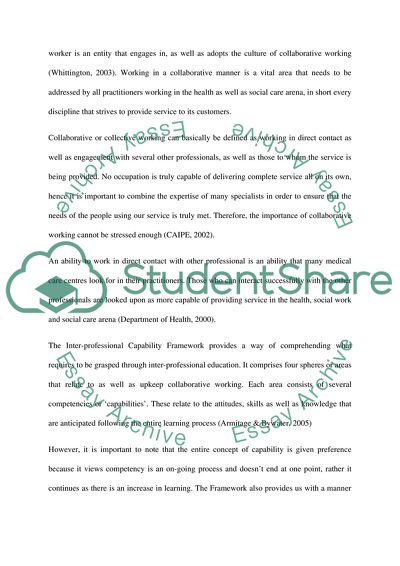Cite this document
(Gibbs Reflective Cycle Report Example | Topics and Well Written Essays - 2000 words, n.d.)
Gibbs Reflective Cycle Report Example | Topics and Well Written Essays - 2000 words. https://studentshare.org/health-sciences-medicine/1762308-using-gibbs-reflective-cycle-and-the-inter-professional-capability-framework-explain-how-your-knowledge-skills-and-attitudes-considered-on-this-module-enhancing-health-and-social-through-interprofessional-practice-will-enable-you-to-become-an-effect
Gibbs Reflective Cycle Report Example | Topics and Well Written Essays - 2000 words. https://studentshare.org/health-sciences-medicine/1762308-using-gibbs-reflective-cycle-and-the-inter-professional-capability-framework-explain-how-your-knowledge-skills-and-attitudes-considered-on-this-module-enhancing-health-and-social-through-interprofessional-practice-will-enable-you-to-become-an-effect
(Gibbs Reflective Cycle Report Example | Topics and Well Written Essays - 2000 Words)
Gibbs Reflective Cycle Report Example | Topics and Well Written Essays - 2000 Words. https://studentshare.org/health-sciences-medicine/1762308-using-gibbs-reflective-cycle-and-the-inter-professional-capability-framework-explain-how-your-knowledge-skills-and-attitudes-considered-on-this-module-enhancing-health-and-social-through-interprofessional-practice-will-enable-you-to-become-an-effect.
Gibbs Reflective Cycle Report Example | Topics and Well Written Essays - 2000 Words. https://studentshare.org/health-sciences-medicine/1762308-using-gibbs-reflective-cycle-and-the-inter-professional-capability-framework-explain-how-your-knowledge-skills-and-attitudes-considered-on-this-module-enhancing-health-and-social-through-interprofessional-practice-will-enable-you-to-become-an-effect.
“Gibbs Reflective Cycle Report Example | Topics and Well Written Essays - 2000 Words”. https://studentshare.org/health-sciences-medicine/1762308-using-gibbs-reflective-cycle-and-the-inter-professional-capability-framework-explain-how-your-knowledge-skills-and-attitudes-considered-on-this-module-enhancing-health-and-social-through-interprofessional-practice-will-enable-you-to-become-an-effect.


